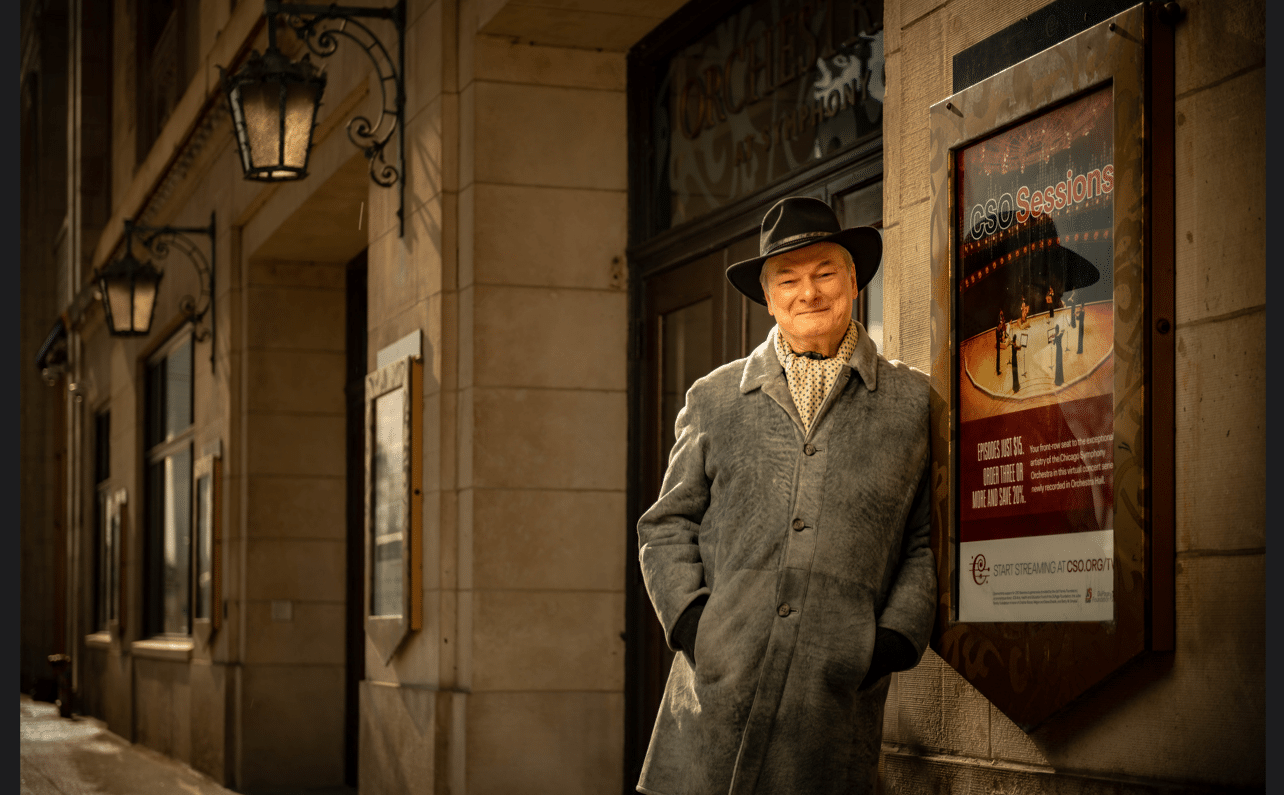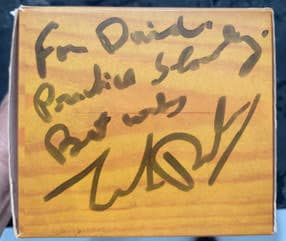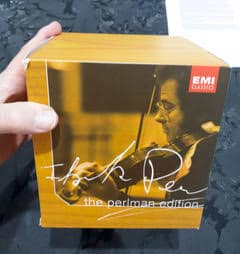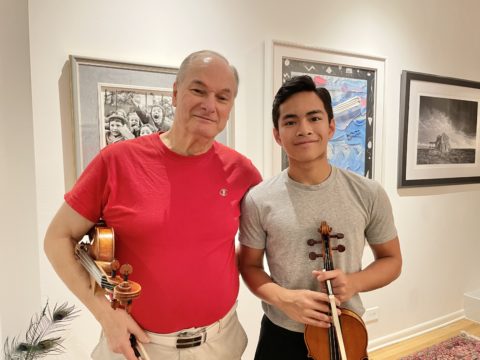 Chicago Symphony Orchestra (CSO) assistant concertmaster David Taylor can be considered one of the living pillars of the classical music community in Chicago and beyond. He began his current role in the CSO in 1979 after having been part of the Cleveland Orchestra as a first violinist. Today, Chicago Musical Pathways Initiative is blessed to have him as part of its vibrant string faculty.
Chicago Symphony Orchestra (CSO) assistant concertmaster David Taylor can be considered one of the living pillars of the classical music community in Chicago and beyond. He began his current role in the CSO in 1979 after having been part of the Cleveland Orchestra as a first violinist. Today, Chicago Musical Pathways Initiative is blessed to have him as part of its vibrant string faculty.
Taylor’s discovery of the violin was interestingly both serendipitous and literal. The son of a high school band director in Ohio, four-year-old David found a 1/8 size violin in their attic. “I started making noise on it imitating my father, as children would do,” recalled David. His father, who also played the violin (as well as several other instruments) became his first teacher. The first contest David won as a violinist came shortly after, at age six. “I studied with my father until I was nine and then he began taking me to lessons at the Cleveland Institute of Music driving 65 miles each way from Canton every week,” David said, highlighting his father’s role in his musical journey.
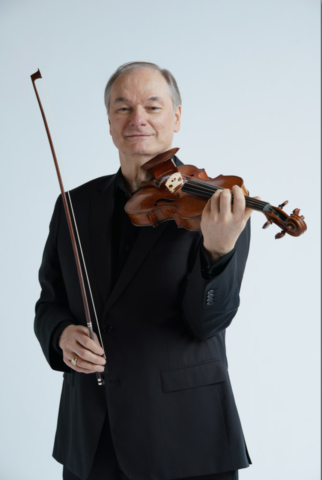 At the Cleveland Institute of Music, David studied with Margaret Randall and Rafael Druian. At the age of 17, as a senior in high school, he moved to New York to study with Ivan Galamian and Dorothy DeLay at the Juilliard School, where he later received both his bachelor’s and master’s degrees.
At the Cleveland Institute of Music, David studied with Margaret Randall and Rafael Druian. At the age of 17, as a senior in high school, he moved to New York to study with Ivan Galamian and Dorothy DeLay at the Juilliard School, where he later received both his bachelor’s and master’s degrees.
According to his CSO biography, Taylor has made numerous solo appearances, including performances with Sir Georg Solti and regional orchestras. He previously served as acting concertmaster of the St. Louis Symphony and concertmaster of the Milwaukee Symphony Orchestra. He often appears in recital, including at the Ravinia Festival, on WFMT, and with the Pressenda Trio with CSO cellist Gary Stucka and pianist Andrea Swan.
Taylor’s start as a teacher also happened at a relatively young age, taking on his first adult student when he was in high school. He knew then that he loved teaching and he continued to teach throughout his college years. Taylor’s current roster of students is composed of advanced players. He teaches privately at the Moody Bible Institute of Chicago and at Roosevelt University’s Chicago College of Performing Arts. A coach of orchestral violinists, he has students in orchestras across the United States and Japan.
Having learned from some of the best violin teachers, and working with world renowned conductors and musicians, Taylor’s teaching style reflects his own unique approach. “The most important thing that a teacher does is to teach a student to teach himself. We are always having to teach ourselves to play better. It never stops,” Taylor explains, adding the progress that he has seen in his own CMPI student. “He’s already thinking in those terms. Every time he comes for a lesson, if I say something, sometimes even before I say it, he already knows what I’m going to say. That shows me that he’s already thinking properly, and that’s 90% of becoming a good musician.”
- “For David, Practice Slowly. Best wishes, Itzhak Perlman”
- Signed Perlman CD
On the importance of learning proper technique, Taylor advises young musicians aspiring for professional careers to work hard. He stresses that there is no substitute for discipline and hard work in order to become the best that one can be as a musician. The technical advice that he often gives his students includes reminders on practicing well. He quotes his friend, Itzhak Perlman, and says, “if you practice slowly, you forget slowly.” He also emphasizes the inseparable relationship of rhythm and intonation especially for violinists as he says, “the intonation hangs on the framework of the rhythm. It’s very easy when you’re practicing to strip the rhythm out of it and get lazy. But the hands remember not only where the fingers must go, but when the fingers must go. They must be both there at all speeds.” For this reason, Taylor says practicing with a metronome helps.
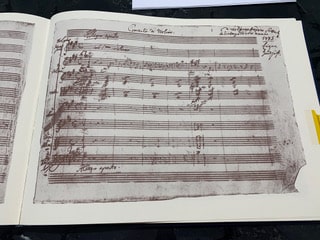 As for musicality and interpretation, Taylor reminds his students that they are not interpreting in a vacuum. “It is helpful, whenever possible, to look at original manuscripts (or autographs) to see a composer’s original intent.” While some composers, like Beethoven, have handwriting that can be very difficult to read, there are many others, such as Mozart, who wrote very specific notations that can be helpful to see in the original, rather than just trusting someone’s edition.
As for musicality and interpretation, Taylor reminds his students that they are not interpreting in a vacuum. “It is helpful, whenever possible, to look at original manuscripts (or autographs) to see a composer’s original intent.” While some composers, like Beethoven, have handwriting that can be very difficult to read, there are many others, such as Mozart, who wrote very specific notations that can be helpful to see in the original, rather than just trusting someone’s edition.
Also important for all serious young musicians is to listen to recordings and watch performances, not just to fulfill an assignment, but for their enjoyment. Having heard that CMPI students have access to tickets to see upcoming CSO concerts, Taylor encourages them to see what concerts are coming up and make plans to watch, not just to hear the music they might be learning, but also to be inspired. For students of music, Taylor likens the experience of watching a professional orchestra similar to that of aspiring pro-athletes watching games. “There’s something rewarding and exciting about seeing a great orchestra play. By seeing pros do it, you get inspired to want to do it yourself. It gives you a reason to practice.”
 Taylor’s wealth of knowledge and experience is a blessing to the vibrant and growing community of musicians of which CMPI is a part. He expressed his appreciation of the work done by CMPI stating, “The mission is to provide help to students who wouldn’t otherwise probably have a chance. I think that’s critically important.” His message to young musicians today is one of encouragement and inspiration. “Music has been around for a long time. The need for great music is not going to go away regardless of what’s happening in the world. It’s always going to be part of all of our lives. You must not allow world events to discourage you from pursuing your goal.” Taylor is one who not only shares but also lives his advice. He came to Chicago to audition with the CSO in 1979, despite a blizzard that buried the city in snow. He was battling tendonitis which made him unable to practice for two days before that audition. Despite the challenges, he managed to land the job as assistant concertmaster, and continued to accomplish great things in his career. In music and beyond, David Taylor is a living inspiration to aspirants for generations to come.
Taylor’s wealth of knowledge and experience is a blessing to the vibrant and growing community of musicians of which CMPI is a part. He expressed his appreciation of the work done by CMPI stating, “The mission is to provide help to students who wouldn’t otherwise probably have a chance. I think that’s critically important.” His message to young musicians today is one of encouragement and inspiration. “Music has been around for a long time. The need for great music is not going to go away regardless of what’s happening in the world. It’s always going to be part of all of our lives. You must not allow world events to discourage you from pursuing your goal.” Taylor is one who not only shares but also lives his advice. He came to Chicago to audition with the CSO in 1979, despite a blizzard that buried the city in snow. He was battling tendonitis which made him unable to practice for two days before that audition. Despite the challenges, he managed to land the job as assistant concertmaster, and continued to accomplish great things in his career. In music and beyond, David Taylor is a living inspiration to aspirants for generations to come.
David Taylor Performances
Images
Top: David Taylor in front of Symphony Center, home of the Chicago Symphony Orchestra
In Article: David Taylor with his student, CMPI fellow Noah Briones; Headshot by Todd Rosenberg; Itzhak Perlman autographed his CD boxed set for his friend, David Taylor, with a note to “Practice slowly”; A copy of an original manuscript (autograph) of W.A. Mozart’s Violin Concerto no. 5 in A major from David Taylor’s library; Headshot by Todd Rosenberg
